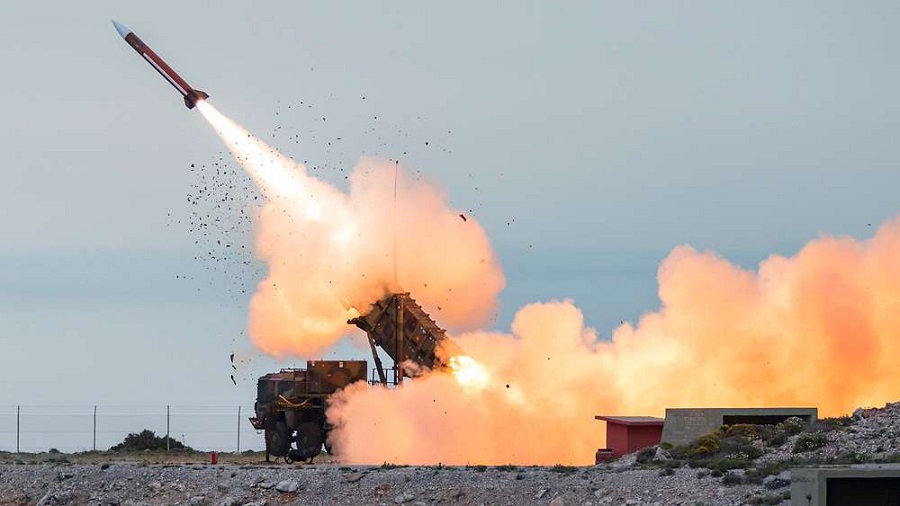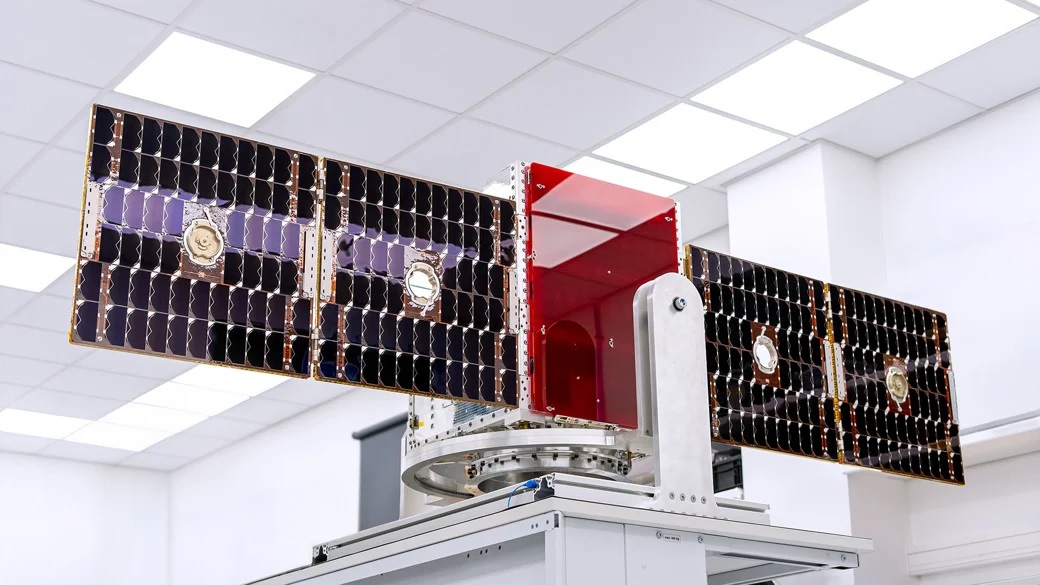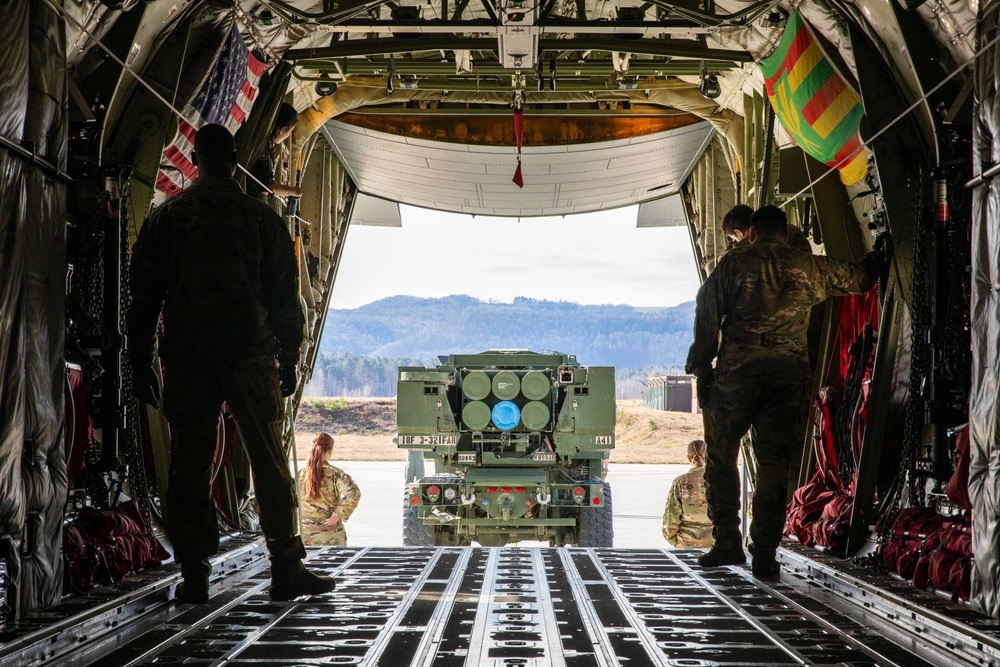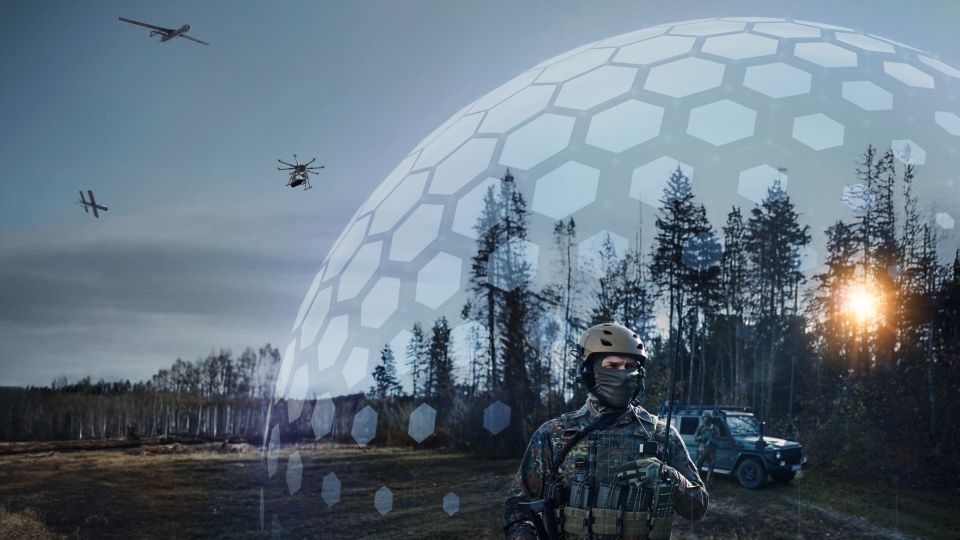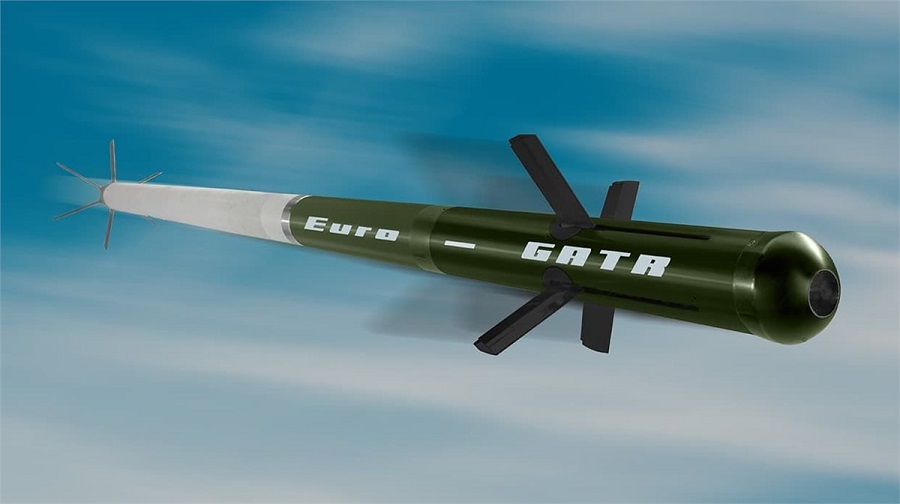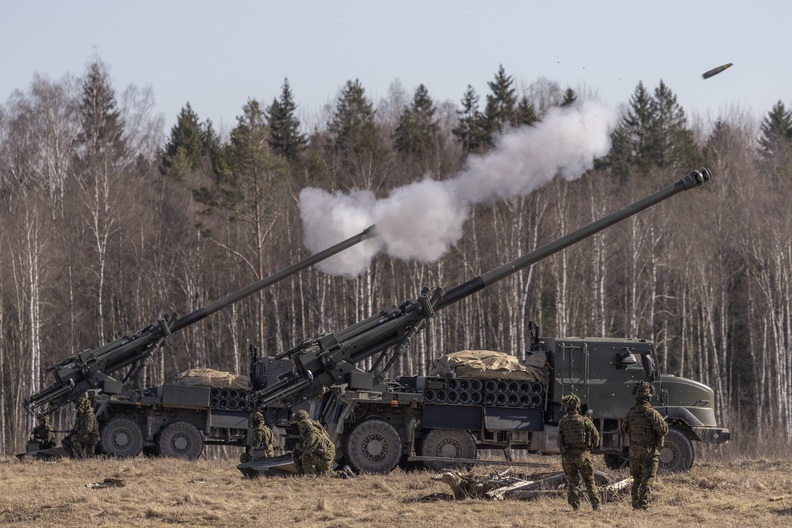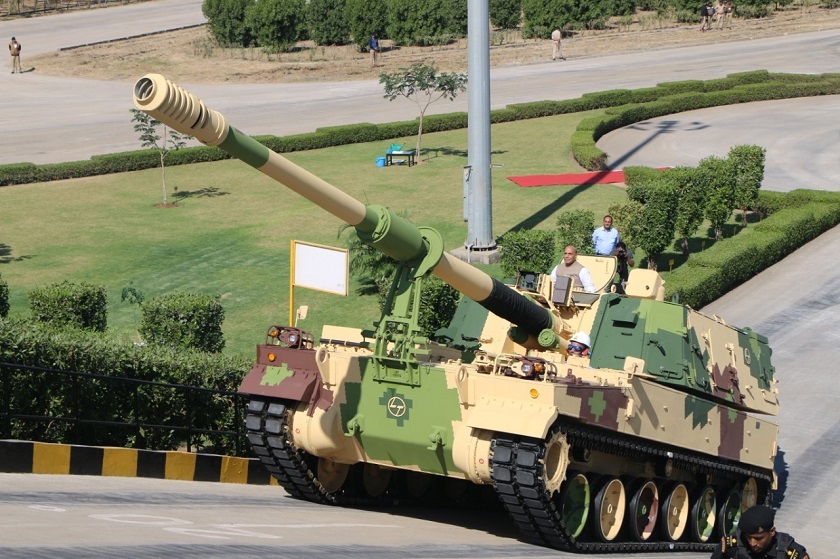For your convenience, you can read the full version of this this article in .pdf format.
Abstract
With the return of war to European soil, the current environment of existential crisis within and beyond the European Union (EU) highlights the importance for greater defence cooperation, so that the Union safeguards its core values and shared principles, and promotes its interests and priorities. Expectedly, hard power, attested by modern, competent, well-equipped and ready-to-deploy armed forces, takes the lead over soft power. Preparatory steps to this direction have already been undertaken, mainly after the launch of the European Union Global Security (EUGS) in 2016, which underlined the necessity of achieving progress in strategic autonomy, through the empowerment and further development of the European defence industry (EDI).
Today, in the midst of war in Ukraine, the European Union’s Strategic Compass, along with the almost simultaneously issued NATO’s Strategic Concept, dictate the acceleration of the ongoing processes in order to achieve robust common defence capabilities. This paper analyses the prospects of the EDI, mainly in light of the relevant political actions undertaken within the framework of the Common Security and Defence Policy (CSDP), by using the Strengths Weaknesses Opportunities and Threats (SWOT) analysis tool. Findings suggest unprecedented opportunities for the growth and the development of the large-sized European defence industries, mostly due to: (a) the increasing defence spending and initiatives led by Member States (MS), EU and NATO, (b) its internationalisation and proven records of successful collaboration globally and, (c) the emergence of new markets/niches. As far as the European small and medium-sized enterprises (SMEs) and the regional industries are concerned, their prospects appear less favourable, not only given their size and vulnerability in comparison to competitors, but also because of numerous barriers that hinder their growth, such as difficulties to the accessibility of funds, to acquire new technology, to employ specialised workforce, to participate in collaborative projects; the increasing costs for developing of defence articles; their struggle in monopolistic or oligopolistic markets; their operation largely across national borders; etc.
The SWOT model
A. Strengths
- Stability and prosperity:
Statistics derived from the Stockholm International Peace Research Institute (SIPRI, 2022) and the European Defence Agency (EDA, 2021), show that the world military spending for the year 2021 reached an all-time high of $2.1trillion and that the European defence spending for the year 2020 increased for sixth consecutive time, reaching the amount of €198 billion. According to SIPRI (2021) and at no surprise, the US firms remain for years 2017-2021, the largest and predominant exporters of major arms globally (39%), with great difference from the second Russian firms (19%). Adding the percentages for firms of EU MS (i.e. 11% for France, 4.5% Germany, 3.1% for Italy, 2.5% for Spain, 1.9% for the Netherlands and 0.2% for the Czech Republic), the total of 23.2% indicates at least the potential, the dynamics and the internationalisation of the EDI. Apparently, these statistics provide preliminary useful information about the stability and prosperity of the EDI, yet they cannot lead to certain or reliable conclusions apropos its prospects.
- Proven records of defence cooperation:
In the framework of the European integration, the initiative of the Permanent Structured Cooperation establishes a new format of defence collaboration between the 25 participating MS[1]. Most importantly, the national defence industries lie under the auspices of their respective governments that act as facilitators and sponsors for each European partnership. Officially, the participation in any project is voluntary, but contributors undertake strict binding commitments. Moreover, every project must be approved by the Council of the EU, the latter maintaining overall policy direction and decision-making authority, the control and the overseeing of the defence capabilities to be developed in relation to the existing strategic capability gaps. Upon approval, many projects become eligible for funding from the EU, along with national contributions. Until now, 4 waves of 60 ongoing projects (and 1 case has been closed) have been approved, covering the full spectrum of defence activities in the following categories: “training”, “land, formations, systems”, “maritime”, “air, systems”, “enabling, joint”, “CYBER, C4ISR” and “space” (Karamanis, 2022).
- Dual-use markets and new markets/niches:
The insertion of commercial capabilities into military systems and vice-versa due to decreased defence government spending after the end of the Cold War, creates new markets and, subsequently, opportunities for new entrants originating from the civilian sector in the defence industry. Most western countries, NATO and the EU continue to steadily rely upon this strategy, by increasing their interrelation with commercial firms through various projects.
Additionally, as defence budgets rise globally due to demand for new weapon systems, the maintenance market will grow correspondingly. Also, as new conflicts and tensions around the globe will continue to emerge and others to evolve dynamically, new customers appear. As studied by Wezeman et al. (2022), India, Saudi Arabia, Egypt, Australia and China, together account for 38% of total global arms imports in 2017-2021; and at the regional level, the respective percentages give first place to Asia and Oceania (43%), followed by the Middle East (32%).
B. Weaknesses
- Structure and limitations of the defence industry:
The defence market has established globally and preserves consistently a strict tiered structure, that solidifies the dominance of certain leading actors and facilitates their prospects for greater market share, whereas SMEs either assume the role of the subcontractor (Bitzinger 2009; Bitzinger 2003), or focus on less sophisticated weapon systems, on pioneering alternatives (as start-ups) or on secondary markets (equipment, garments, maintenance, etc.).
More specifically, the Original Equipment Manufacturers (OEMs), i.e. companies like Lockheed Martin, Boeing, Raytheon, Airbus, etc., endowed with skilful and experienced workforce, advanced equipment and know – how, hold the role of the prime contractor in defence contacts, usually negotiating directly with governments, along with the role of systems integrators in the acquisition life-cycle. Tier 1 sub-contractors are, in most cases, highly specialised large companies that manufacture major sub-systems, sub-assemblies and components, such as avionics, electronic warfare systems, radars, certain structural parts etc., and receive parts and services from Tier-2 suppliers and so on. This market structure favours the prosperity of traditional key players, sets barriers which obstruct new entrants and, eventually, it perpetuates monopolies or imperfect competition.
- Endogenous characteristics of the EDI:
The European defence landscape remains fragmented, partially due to the great variety of weapon systems possessed by the EU MS, as a reflection of the fact that security and defence remain areas of shared competence between the EU and its MS. Countries with a developed defence industry (i.e. France, Italy, Spain, Germany and the Netherlands), cover their defence needs within national lines and limit to the greatest possible extent their dependence from external sources. On the other hand, the countries of the Central-Eastern Europe which formerly belonged in the Warsaw Pact (Poland and Romania), as attested indicatively by Radnóti (2018), are greatly dependent from the US, as are other traditional operators/customers of American defence products (for example Greece, the Netherlands, Belgium and Portugal). Consequently, only a minor part of European defence spending is allocated to the EDI. According to Wezeman et al. (2022), Europe accounts for 18% of total US arms exports while the US account for 54% of the region’s arms imports.
- Costs for the development of new defence products and weapons systems:
Growing costs for the development of cutting-edge defence products and weapons systems related to the development, possession and use of privileged or state-of-the-art technology; the need for huge R&D funding and heavy capital investment; the existence of property, intellectual and proprietary rights and patents; the quest for rare resources and for raw materials; the restricted number of key suppliers; the capital and labour intensity; the necessity of heavy loaning and of extensive financing; the excessive administrative expenditures for cumbersome and lengthy bidding processes; the difficulties for the administration and management of contracts in prolonged timelines; etc., constitute endogenous characteristics of the defence industry which eventually block or deter new entrants and the reduce the openness of the market. In addition to the aforementioned, modern industries have to deal with many kinds of indirect or hidden cost that have emerged lately: measures to comply with stricter environmental legislation, higher administrative costs to deal with the procurement legislation, marketing and lobbying costs to preserve or increase market share, etc.
C. Opportunities
- EU’s strong political will – ambitious plan of action:
Although the origins of the common security and defence policy in Europe can be tracked in the post-WWII era[2], the EU officially considers the Treaty of Maastricht of 1992, as the turning point of its present defence architecture. Since then, the Treaty of Lisbon (2007) accelerated defence integration, whereas in 2016 the EU set up its updated defence strategy by launching the EUGS, which replaced the European Security Strategy (ESS) of 2003. The new strategy, inter alia, redefines Europe as a global actor and security provider; emphasizes its focus mainly on the European continent, its neighborhood and targeted areas; determines a wider range of security threats and risks (including migration, climate change, energy insecurity, etc.) and pays equal attention “from vision to action” by introducing the concept of strategic autonomy at the service of hard power, and underlining the importance for a solid, innovative and competitive EDI. The recently issued Strategic Compass (of March 2022) complements the EUGS by setting a clear course of action for MS to develop common defence capabilities.
After more than seven decades from the foundation laid for the development of a common security and defence policy on European soil, the EU has now established strategic autonomy as a key ambition for its sustainment and growth. The war in the Ukraine served as a catalyst for EU officials to elaborate more on this concept, by transforming the initial “wish-phrase” to a clear target. Therefore, the EDI has been assigned the role of the enabler of Europe’s autonomy of decision and action.
- Direct defence funding and initiatives by the EU and by NATO:
Apart from stable funding derived directly from national budgets, the EU as a distinct entity, funds steadily and periodically the EDI throughout various projects. The chief role of the facilitator, supervisor and coordinator has been assigned to the European Defence Agency (EDA). In this context the European Defence Fund, the key funding mechanism, has been financed for years 2021-2027 with the amount of €8 billion (€5.3 billion for collaborative capability development projects and €2.7 for collaborative defence research (European Commission, 2021). However, national contributions of MS towards European collaborative projects for 2020 amounted only to €4.1 billion out of a total national defence spending of €198 billion, which corresponds to 2,07% and forms the third lowest value recorded by EDA since 2005 (EDA, 2021). This fact creates a question regarding the willingness of MS to deepen their cooperation within the EU, replacing to a greater extent their quasi-autonomous procurement activity in the fields of defence and security. On the other hand, 22 EU MS are also members of NATO[3], an organization of now 31 member states which share common values and face similar threats and risks with the EU. While the mutually agreed upon – yet not legally binding commitment – percentage of 2% of Gross Domestic Product for defence spending continues to fall, since only 8 members (5 from the EU: Greece, Poland, Croatia, Estonia and Latvia) hit the target for 2021 according to estimates (NATO 2022), the 2022 NATO Strategic Concept calls for forging deeper cooperation relations, through greater national funding, in order to fulfill its three core tasks: deterrence and defence, crisis prevention and management, and cooperative security.
- Emerging markets:
The concept and context of “common defence and security” encompasses new domains like cyber and outer space. The EU has an explicit Space Policy, which aims to strengthen existing European space assets and services and to confront hybrid threats like cyber-attacks, proliferation of fake news, etc. To support this mission, the EU plans to invest for years 2021–2027 the amount of €14,69 billion and encourages the participation of start-ups and SMEs in this initiative. Many space applications may be dual-use: developed initially for civilian purposes and then used in defence, and vice versa (like the internet, the encryption, the GPS, meteorological data, communications, etc.)
- Global trend of armaments cooperation:
The choice of autarky in defence which dominated as a deliberate strategy from the creation of the modern nation-states until the first decades after the end of the WWII, is still on the table. However, it seems to be relatively weakened and in a plethora of cases out of sync with the current defence reality. In any case, governments in the western democratic world institutionally assume total responsibility to protect their citizens internally and externally as expressed by their constitutions. For their armament decisions, besides the suggestions of officials (both technocrats and bureaucrats) and pressure from the industry (lobbying), the decision processes also include factors like bargaining power, national strategy, geopolitics and geostrategy, participation in various alliances (political and military), trade-offs, the development model they prefer, fiscal constraints, etc. These features are weighted accordingly and provide the rationale for endogenous domestic production or for transnational collaboration. In today’s complex reality the concept of defence collaboration has become far more welcome than in the previous decades, offering a new range of opportunities to the EDI.
D. Threats
- The “ongoing” European defence integration:
The abandonment of the idea for a single European constitution by creating a supranational law order, after the Treaty of Rome of 2004 was never ratified by all MS[4], hampered the European integration process since the core state functions (defence included), eventually remained exclusively to the sovereign nations (MS). Despite that, the Lisbon Treaty on European Union (2007) established the “mutual defence and solidarity clauses” (Articles 42.7 and 222 of TEU), nevertheless defence will always be “the first duty of the sovereign, that of protecting the society from the violence and invasion of other independent societies” as Adam Smith subscribed in The Wealth of Nations (Smith, 1776). Obviously, despite EU’s strong political will, as proven by numerous past and current initiatives in the fields of defence and security, defence integration remains almost a vision with the MS bearing the major part of responsibility. Hence, the EDI reflects a sum of individual industries and not as a homogenous whole.
- Uncertain global financial environment:
As the global financial environment deteriorates (IMF, 2022 a and b) partially due to the continuing consequences of the pandemic COVID-19 and the war in the Ukraine, the financial uncertainty and instability driven by the rise of prices and the scarcity of raw materials and energy, the severe implications in the supply chain, the energy insecurity etc., diminish the profit margin for industries, slow-down economic growth and cumber access to loaning and financing. Even though defence budgets from nations, EU and NATO (i.e. the major portion of the aggregate demand) are expected to rise in the upcoming years, as explained in the sections of Strengths and Opportunities, cost-driven inflation will endanger armaments production (fewer defence articles for the same price) from the defence industries, which may in turn result in decreased demand, a phenomenon known as inflationary spiral.
- New Order in international relations:
In the aftermath of the Cold War, the bipolar international order, despite periods of tension and limited peripheral wars in, achieved some global stability. After the collapse of the USSR, the US achieved their target, their “unipolar moment” (Krauthammer, 1990), yet the world again enjoyed stability and peace. Today’s world seems relatively different: China’s increasing economic and military power and Russia’s aggression; the US withdrawal from Afghanistan in 2021 and from Syria in 2014; BREXIT; the rationale beneath French President Macron’s statement about the “brain-dead” NATO; the AUKUS trilateral agreement (between US, UK and Australia) outside NATO’s framework; the awkwardness, the inertia and indecisiveness of the “western world” to end the war in the Ukraine; etc., all suggest a rise of multipolarity or apolarity in the current international order. This situation may favour defence industries in the short run but will eventually have a negative impact in the long run.
- The right of self-defence and its implications:
International Law protects the inherent right of nations to defend themselves with an abundance of prescriptions and provisions. Consequently, no organisation or supranational authority/entity can force nations to allocate their defence budget in a certain way, despite the existence of various mutual agreements and legal restrictions, taking also into account the lack of clauses for suspension. In any case, this does not mean that the arms market remains unregulated: various jurisdictional and judicial bodies from these organisations have the right, power, and authority to impose sanctions for misconduct and violations.
Moreover, while presently the EU MS appear united against the aggression, revisionism, and expansionism of Russia, this is not always the case: each and every one faces different threats and challenges and, consequently, sets different and distinct defence priorities.
- Economic patriotism:
The GATT 1994 (Article III:8) and the GATT in Services (Article XIII) exclude government procurement, and thus defence procurement, from the main multilateral World Trade Organization (WTO) disciplines. Apparently, this fact indirectly legitimises to an extent favouritism and special treatment of national companies, at the expense of openness and competition, a behaviour described as economic patriotism[5].
The US with the famed “Buy American Act”, China with the “Made in China” national strategy), India with the “Make in India” campaign, Russia, and others discreetly, provide special prerogatives to their national industries by applying nation-centric policies. The EU, instead, with the Directive 2009/81/EC, despite recognising from the preamble that “national security remains the sole responsibility of each Member State, in the fields of both defence and security”, dictates that “contracting authorities/entities shall treat economic operators equally and in a non-discriminatory manner and shall act in a transparent way” and calls for opening-up of procurement to competition. These principles in no way discourage EU MS to waive the competition rule by invoking the “exception of defence”, which is embodied in the Treaty for the Functioning of the E.U. [TFEU, Art 346 (1)][6]. This possibility of autonomous or semi-autonomous choices is reflected in the numbers of types of active weapon systems possessed by E.U. MS: 178 weapon systems, 17 different main battle tanks, 29 types of destroyers/frigates and 20 types of fighter jets (European Parliament, 2020). Credibly, the huge duplication of resources and the consequent lack of coherence, interoperability and deployability obstruct the target of the strategic autonomy and the development of joint defence capabilities.
Conclusions
The target of expediting progress in strategic autonomy, well-articulated in the EUGS of 2016, has acquired new meaning, dimensions, and urgency after the outbreak of war in the Ukraine. The EU, in the framework of CSDP, determined with the Strategic Compass of 2022 a laborious new course of action, not receding from the tools of soft power, but dictating preparedness and readiness for the application of hard power, wherever and whenever necessary. Well-equipped, coherent, interoperable and promptly deployable armed forces compel the substantial involvement of the EDI.
After having reviewed literature from various interrelated scientific disciplines (i.e., political science; economics; international relations and trade; European studies; law, policies, and regulations; industrial organisation; etc.), given the methodology consciously selected and its limitations, the prospects of the EDI are presented below in Table 1.

Synoptically, critical observations, key findings and conclusions are as follows:
- The European defence ecosystem comprises not only the top highly internationalised and prosperous European industries, but also SMEs and others from regional countries, which sometimes fall under the radar of officials, researchers and scholars. Consequently, any generalization regarding the prospects of the EDI is potentially misleading and inaccurate.
- Certain factors like the steadily increasing funding from nations, the EU and NATO; the strong political will within the EU, and complementarily within NATO, and their ongoing and incentivized various research and development projects; and the new markets arising, have a notable impact to both large defence industries and the SMEs.
- Large defence industries also exploit their stable clientele and well-established channels of distribution; their privileged access to specialized workforce; their solid structure; the production of dual-use products which leads to economies of scale and scope; their internationalized profile and concurrent collaborations globally; the structure of the market and their dominant market share; their plausible potential to better deal with cost, financial and cost-related factors, etc.
- SMEs and regional industries may benefit from ventures under the auspices of the EU and NATO, for example the accelerating investments for EDTs, R&D or start-ups; from new markets arising globally or by assuming a more active role in secondary markets (maintenance, support, spare parts, etc.) and/or the production of less sophisticated weapon systems. Outwardly, many deterrent factors, like the endogenous characteristics and the structure of the market; cost, financial and cost-related factors; difficulties in accessing specialized labor etc., either endanger their existence or restrict their prospects for further development and expansion.
- The reluctance noted in European defence integration, at least before the outbreak of war in the Ukraine; the current global financial environment of uncertainty and instability; the new international order of apolarity/multipolarity; the absence of “fair play” (i.e. economic patriotism, preferential policies and lack of reciprocity) and the intense rivalry for defence contracts etc., emerge as the most important threats for the EDI.
[1] Malta and Denmark have decided not to participate. Nevertheless, Denmark has changed its initial decision and is about to join the CSDP and EU military operations as explained in Note no 6. It also needs to be mentioned that Denmark has joined the F-35 Joint Strike Fighter program very early in 2001.
[2] Beginning with the US “Marshall plan” and the Franco-British Treaty of Dunkirk of 1947, later with the Brussels Treaty of 1948, the North Atlantic Treaty of 1949, the Treaty of Paris of 1951 which established the European Coal and Steel Community created, the Treaty of Rome of 1957 which established the European Economic Community and the European Atomic Energy Community established, etc.
[3] Belgium, Bulgaria, Croatia, Czech Republic, Denmark, Estonia, France, Germany, Greece, Hungary, Italy, Latvia, Lithuania, Luxembourg, the Netherlands, Poland, Portugal, Romania, Slovakia, Slovenia, Spain and Finland.
[4] The process of ratification stopped after the Treaty had been rejected by the French and the Dutch during relative referenda held in 2005.
[5] In 2005, the then French prime minister Dominique de Villepin introduced this term in the global vocabulary of trade, expressing his opposition to the acquisition of the French company Danone by the American company Pepsico. It suggests that economic choices must also protect homeland’s interests.
[6] “1. The provisions of the Treaties shall not preclude the application of the following rules: (a) no Member State shall be obliged to supply information the disclosure of which it considers contrary to the essential interests of its security; (b) any Member State may take such measures as it considers necessary for the protection of the essential interests of its security which are connected with the production of or trade in arms, munitions and war material; such measures shall not adversely affect the conditions of competition in the internal market regarding products which are not intended for specifically military purposes.”
Authors:
ANGELIS TSAGDIS – PhD candidate at the University of Patras, Rio, PC 26504, Achaia, Greece – Lt.Col.(Finance) Hellenic Air Force
PANAGIOTIS BLANOS – European Peace Facility Community Manager, MSc
APOSTOLOS RAFAILIDIS – Associate Professor at the University of Patras, Rio, PC 26504, Achaia, Greece
References
Bitzinger, R. A. (2003) Towards a brave new arms industry?. Oxford, New York: Oxford University Press.
Bitzinger, R. A. [Ed.] (2009) The Modern Defense Industry: Political, Economic, and Technological Issues. Santa Barbara: Praeger Security.
European Commission (2021) The European Defence Fund (30 June 2021). Available at https://www.ffg.at/sites/default/files/downloads/DEFIS%20_%20EDF%20Factsheet%20_%2030%20June%202021_0.pdf (Accessed 03 August 2022).
European Defence Agency (EDA) (2021) Defence Data 2019-2020: Key findings and analysis [Report]. Available at: https://eda.europa.eu/docs/default-source/brochures/eda—defence-data-report-2019-2020.pdf (Accessed 12 August 2022).
European Parliament, Policy Department for External Relations, Directorate General for External Policies of the Union (2020) The EU’s Defence Technological and Industrial Base [Study]. Available at: https://www.europarl.europa.eu/RegData/etudes/IDAN/2020/603483/EXPO_IDA(2020)603483_EN.pdf (Accessed 06 August 2022).
International Monetary Fund (2022) Global Financial Stability Report: Navigating the High- Inflation Environment [Report]. Available at: https://www.imf.org/en/Publications/GFSR/Issues/2022/10/11/global-financial-stability-report-october-2022 (Accessed 31 August 2022).
International Monetary Fund. (2022). World economic outlook: Countering the Cost-of-Living Crisis [Report]. Available at: https://www.imf.org/en/Publications/WEO/Issues/2022/10/11/world-economic-outlook-october-2022 (Accessed 31 August 2022).
Karamanis, D. (2022) ‘Defence partnerships, military expenditure, investment, and economic growth: an analysis in PESCO countries’, Hellenic Observatory Discussion Papers on Greece and Southeast Europe, 173. Available at: http://eprints.lse.ac.uk/115485/1/GreeSE_paper_173.pdf (Accessed 10 August 2022).
Krauthammer, C. (1990) ‘The unipolar moment’, Foreign Affairs, 70, p.23.
Mauro, F. (2018) Strategic Autonomy Under the Spotlight: The New Holy Grail of European Defence. GRIP.
North Atlantic Treaty Organization (NATO) (2022) Defence Expenditure of NATO Countries (2014-2021) [Press release of 31 March 2022]. Available at: https://www.nato.int/nato_static_fl2014/assets/pdf/2022/3/pdf/220331-def-exp-2021-en.pdf (Accessed 06 August 2022).
Radnóti, A. (2018) Central-Eastern Europe: Still Buying American, For Europe’s Good, in European Liberal Forum (ed.), Solving the European Defence Market Puzzle, pp. 61-67. Available at: https://liberalforum.eu/wp-content/uploads/2021/06/Solving-the-European-Defence-Market-Puzzle.pdf (Accessed 10 September 2022).
Smith, A. (1776) An Inquiry Into the Nature and Causes of the Wealth of Nations. W. Strahan, and T. Cadell, in the Strand.
Tirpak, J. A. (1998) ‘The distillation of the defense industry’, Air Force Magazine, 81, pp.54-59.
Wezeman, P. D., Kuimova, A. and Wezeman, S. T. (2022) ‘Trends in international arms transfers, 2021’, SIPRI. Available at: https://www.sipri.org/sites/default/files/2022-03/fs_2203_at_2021.pdf (Accessed 30 September 2022).











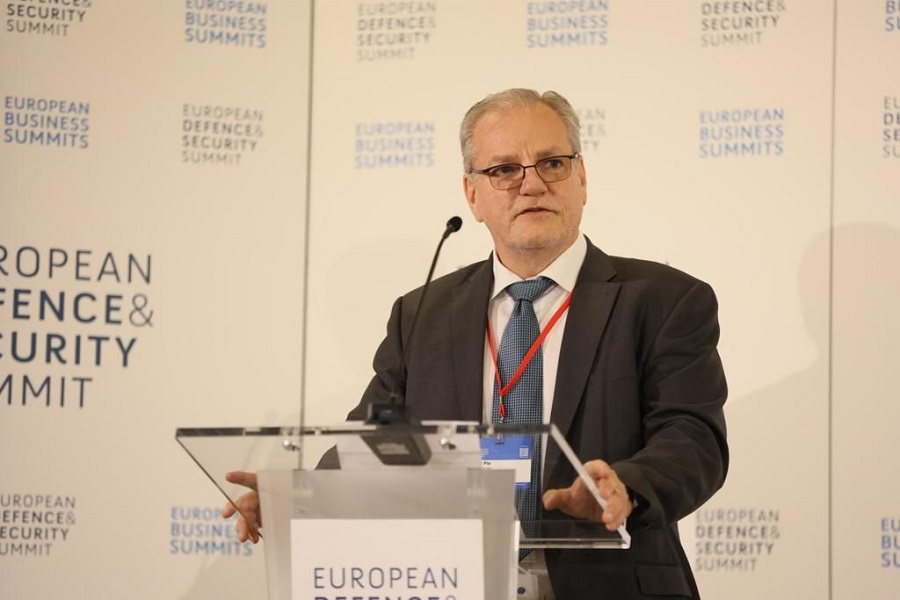
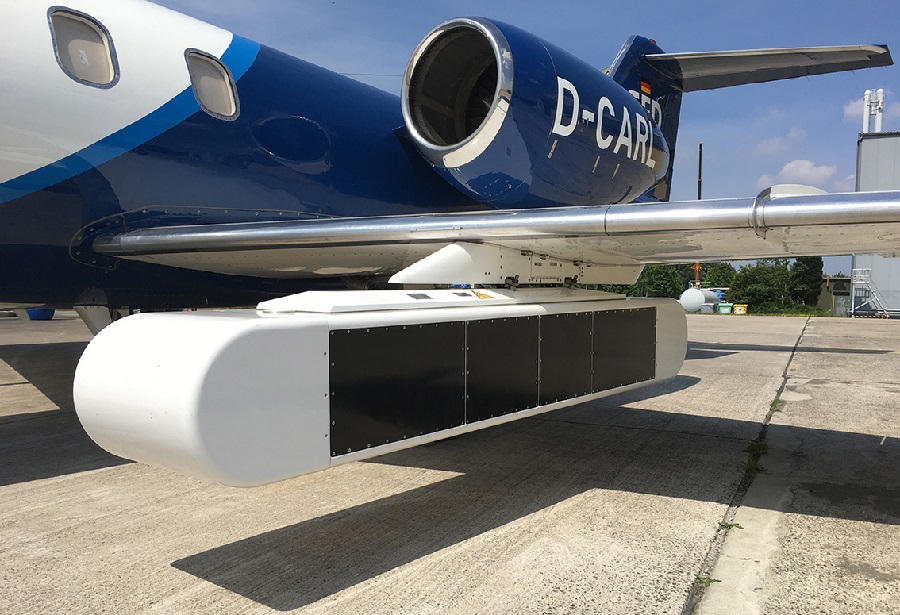
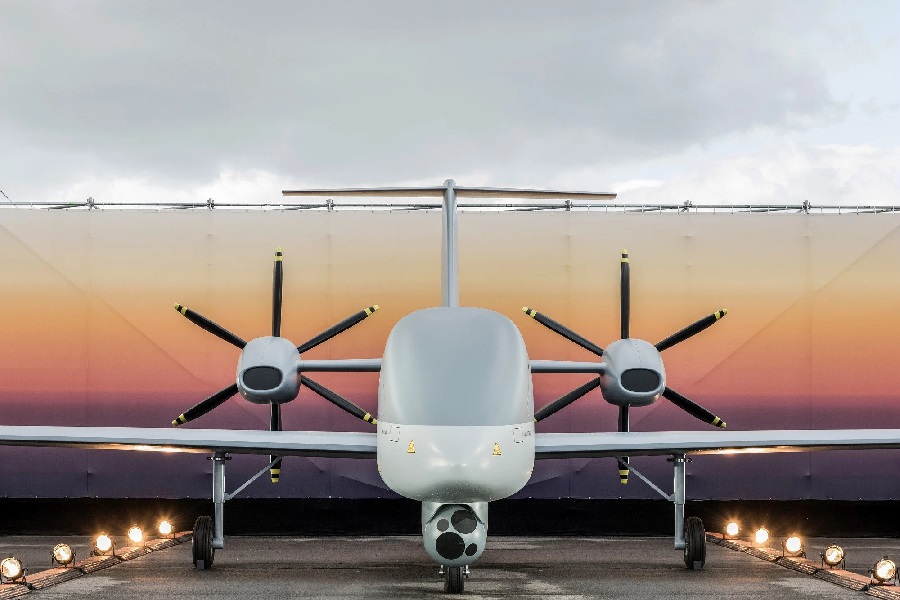


![Leidos completes successful flight test of Black Arrow Small Cruise Missile [VIDEO]](https://defence-industry.eu/wp-content/uploads/2025/04/Leidos-completes-successful-flight-test-of-Black-Arrow-Small-Cruise-Missile-VIDEO.jpg)






